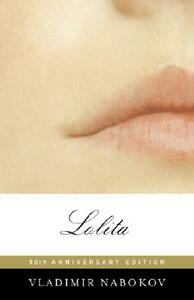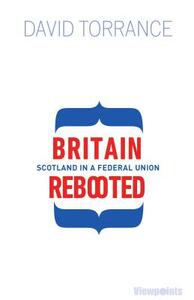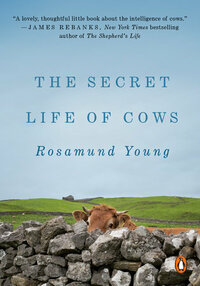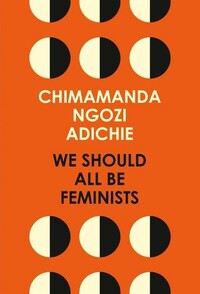Take a photo of a barcode or cover
chrispowers's Reviews (243)
A good book to understand what federalism actually is, and how it might work in a British context.
Federalism is a very old British idea, which Torrance makes clear. Easy to read, cogently argued it makes the case for an idea whose time came by 1914 and has patiently waited around ever since.
The big question I have at the end however is what powers should the federal British government continue to have, if we look at a paradigm where the UK sits within a Federal Europe? Nationalists would fear federalism downwards and upwards would make the UK level irrelevant, and it is worthwhile having decent answers to this question that allow for supranational levels of government - which Torrance did not get round to doing for us.
Federalism is a very old British idea, which Torrance makes clear. Easy to read, cogently argued it makes the case for an idea whose time came by 1914 and has patiently waited around ever since.
The big question I have at the end however is what powers should the federal British government continue to have, if we look at a paradigm where the UK sits within a Federal Europe? Nationalists would fear federalism downwards and upwards would make the UK level irrelevant, and it is worthwhile having decent answers to this question that allow for supranational levels of government - which Torrance did not get round to doing for us.
While a bit disturbed by the trust in homeopathy, it came later in a book I thoroughly enjoyed. It is also given support because of the individual approach to treatment, so while I don’t support claims that homeopathy ‘works’ in any meaningful way, I sympathise with why Young mentions it, and has faith in it.
The wider book, it is such a relaxing read, and in a very gentle way softens your heart to the welfare of animals. I have been, simultaneously, reading a book on African American history and I could not help but draw parallels between factory farming and Ta-Nehisi Coates’ description of slave plantations. I could not help but wonder, will people 150 years from now look at our treatment of farm animals as many of us today look back on the institution of slavery?
I read a couple of negative reviews of this book post-finishing and a common critique was how Young anthropomorphises her charges. I take the point, I remember that as a criticism from GCSE English of much in literature, but I think here that misses the point. Young is trying to show that we are not all so different after all, and anthropomorphisation of her farm animals is entirely appropriate for that (and as she argues, something many of us do with pets).
In summary, this is a great book if you want to go at a slower and more relaxed pace, develop your empathy, have some heartening conversations with friends, and reflect on some big questions without feeling like you’re being subjected to a polemic.
The wider book, it is such a relaxing read, and in a very gentle way softens your heart to the welfare of animals. I have been, simultaneously, reading a book on African American history and I could not help but draw parallels between factory farming and Ta-Nehisi Coates’ description of slave plantations. I could not help but wonder, will people 150 years from now look at our treatment of farm animals as many of us today look back on the institution of slavery?
I read a couple of negative reviews of this book post-finishing and a common critique was how Young anthropomorphises her charges. I take the point, I remember that as a criticism from GCSE English of much in literature, but I think here that misses the point. Young is trying to show that we are not all so different after all, and anthropomorphisation of her farm animals is entirely appropriate for that (and as she argues, something many of us do with pets).
In summary, this is a great book if you want to go at a slower and more relaxed pace, develop your empathy, have some heartening conversations with friends, and reflect on some big questions without feeling like you’re being subjected to a polemic.
Gill Sans is the official font at my workplace, and I am the person responsible for enforcing its use by all the staff. It’s a beautiful modernist font which I love seeing, second only in my heart to Futura, the story of which is fascinating!
It is with that then that after months of passing by this essay in Waterstones I finally succumbed and bought it. I’ve still yet to read about the controversies of Eric Gill’s life, but one thing is clear from this essay and that is how catty and disdainful he can be - to the point that you can laugh out loud reading it.
His essay has already made me look at the world in a different way, seeing and perceiving writing with more understanding than before. In the church in Saffron Walden, I marvelled at a recently carved C and its rendering in Times New Roman, while criticising the medieval writer font used on a stained glass window which was barely legible. Gill has given me the insight and some of the vocabulary to be able to judge writing on its style and form, not just its content.
There are some beautiful quotes on beauty, and on story telling which will stick with me. And the essay ends with a provocative suggestion regarding the future of lettering and the use of shorthand, which I seem to find myself broadly in agreement with!
I recommend the read. It doesn’t take long, there’s a laugh to be had here and there, and guaranteed you’ll look at the world around you a little differently afterwards.
It is with that then that after months of passing by this essay in Waterstones I finally succumbed and bought it. I’ve still yet to read about the controversies of Eric Gill’s life, but one thing is clear from this essay and that is how catty and disdainful he can be - to the point that you can laugh out loud reading it.
His essay has already made me look at the world in a different way, seeing and perceiving writing with more understanding than before. In the church in Saffron Walden, I marvelled at a recently carved C and its rendering in Times New Roman, while criticising the medieval writer font used on a stained glass window which was barely legible. Gill has given me the insight and some of the vocabulary to be able to judge writing on its style and form, not just its content.
There are some beautiful quotes on beauty, and on story telling which will stick with me. And the essay ends with a provocative suggestion regarding the future of lettering and the use of shorthand, which I seem to find myself broadly in agreement with!
I recommend the read. It doesn’t take long, there’s a laugh to be had here and there, and guaranteed you’ll look at the world around you a little differently afterwards.









